The Hemline Index Theory is a theory which exists in fashion, theorising that the length of skirts and dresses is in direct correlation with the economy. Simply put, the theory is that the prevalence of short skirts and dresses in the spotlight has historically been an indicator of prosperous times in the economy. Conversely, longer skirts and dresses are a reflection of more sombre economic times, making women feel the need to cover up more.
For the most part, the theory historically tracks quite well. However, there have been some criticisms. In an article from InStyle, fashion psychologist Dr Dawnn Karen argues that the length of skirts is a response, but not to the economy. Instead, she argues, the length of skirts should be seen as women’s response to a number of prevalent issues taking place at the same time, i.e. the politics of the time, the economy and how we feel about the whole world.
What I like about the Hemline Index Theory, as it was always argued, like in the InStyle article, is that it highlights how fashion operates as a language to form rhetoric. And like spoken language, this visual language evolves and responds to the locale it finds itself in. However, what the Hemline Index Theory and InStyle both failed to acknowledge, is how languages aren’t spoken by just one kind of person. To be more precise, items of clothing, as building blocks of a visual language, are not claimed by any particular gender.

Image courtesy of www.jeanpaulgaultier.com
It was in 1985 that Jean Paul Gaultier brought valuable shock to the fashion industry by sending a man in a skirt down the runway. At the time, the move was incredibly daring, and the piece was considered unwearable. A look at even the last 6 months of menswear fashion will show that the menswear skirt has come a long way from the novel. In fact, this Milan Fashion Week’s Menswear AW23 is dominated by men in skirts.
This is in line with the long-argued rhetoric that material cut and sewn in specific shapes to be worn on the body does not, in fact, possess a gender specificity. Cishet male celebrities like Harry Styles and Brad Pitt have been used as the face of this argument for years (problematically inferring that even real men can wear dresses, and not just… others). In fact, Styles made history as the first man to ever appear solo on the cover of US Vogue – and he did so in a dress.
What do all of these things have in common? Harry Styles on Vogue, the dominance of the skirts in the latest seasons, and even the iconic work of Jean Paul Gaultier in the 80s?

Photograph by SEBASTIAN REUTER/GETTY
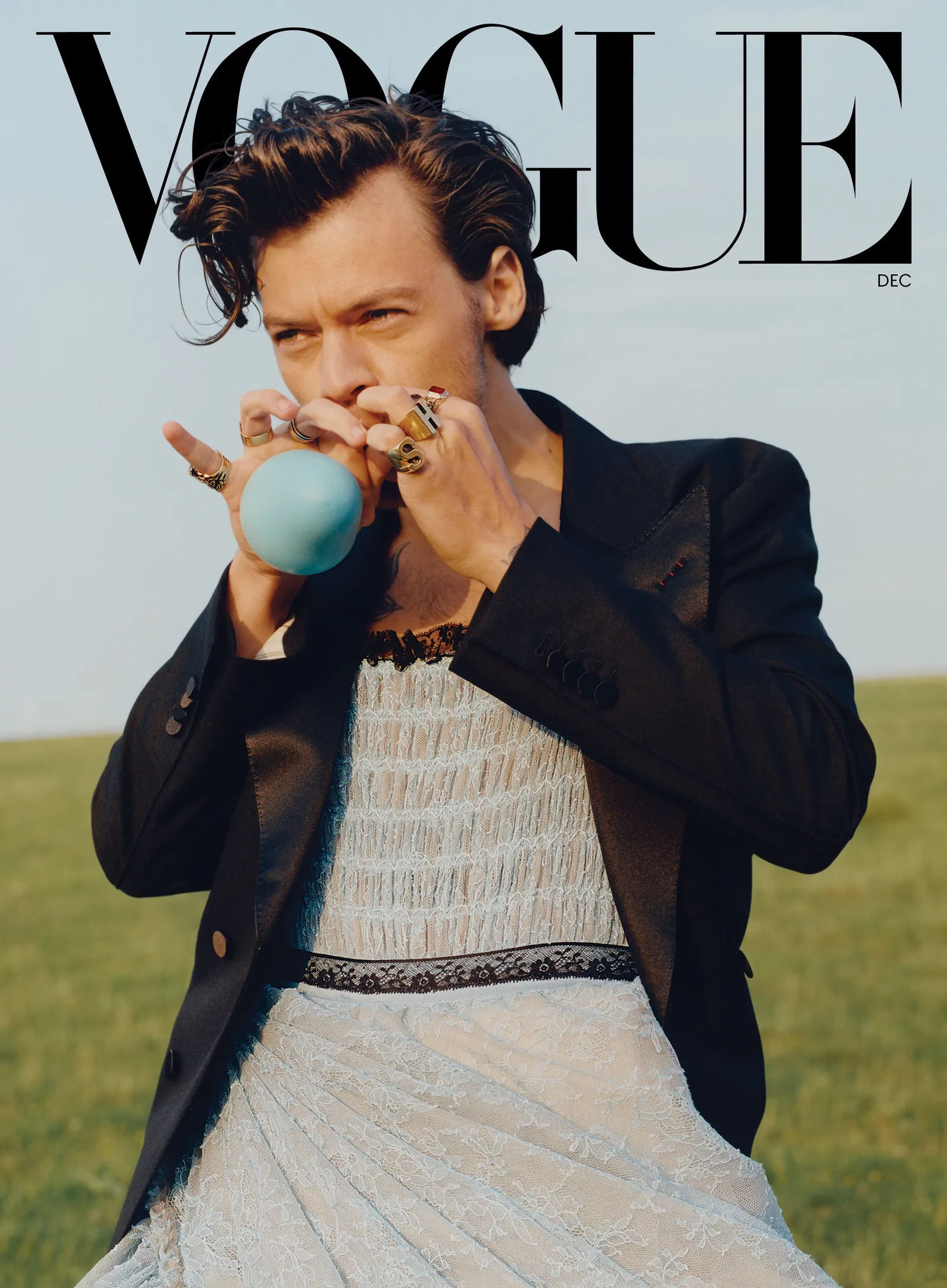

Photograph by Tyler Mitchell, Vogue, December 2020
Men in skirts mostly distinguish themselves from femmes in skirts by wearing maxi skirts. It is certainly a strategic choice in 2023 to have men in skirts consistently in maxi skirts. You’ll be hard-pressed to spot a knee in any of the men in skirts. This comes at a time where, in women’s wear, the mini skirt is gaining increasing social currency.
Miu Miu outdid their own embellished SS21 mini skirt with the SS22 ultra mini pleated skirt. Both of these pieces overwhelmingly dominated editorials, performances and red carpets in the year of their release. Simultaneously, even outside of high fashion, Aaliyah-core infiltrates youth aesthetics with the mini skirt being a mandatory part of the uniform. Regular retailers like Mr Price even offer Miu Miu dupes.
There are plenty of reasons for designers to go with the mini right now. Of course, women’s wear also has plenty of long skirts stirring chatter in fashion spaces. But the inverse – a mini skirt for men – is rarely ever the case.
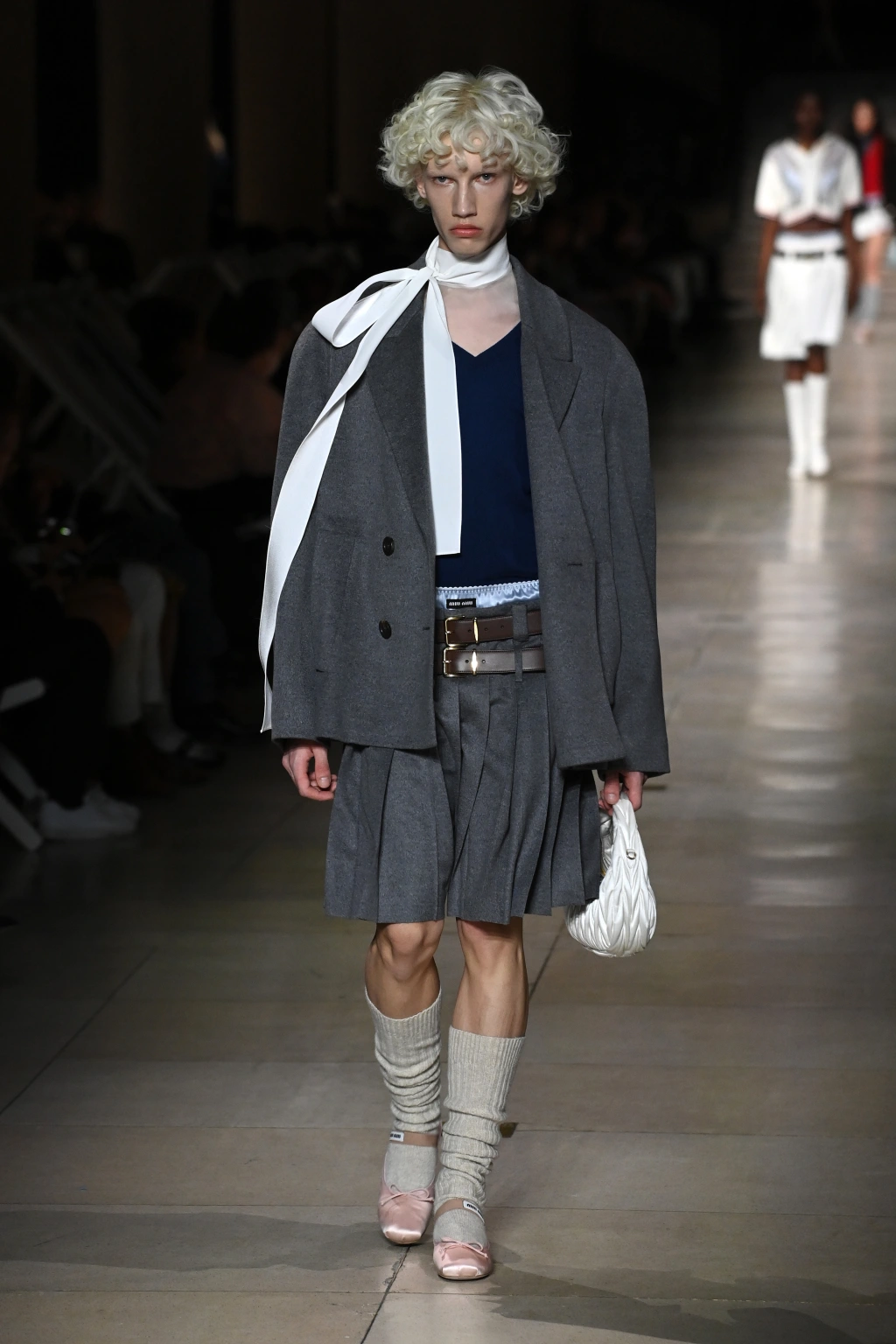
Photograph by Pascal Le Segretain/Getty Images
This is antithetical to what “men in skirts” was originally supposed to do. Now, moving away from the genderlessness of clothing, more nuanced divisions of gender are reified by the lengths of skirts.
All at once, so many other problematic narratives arise. Men – real men, that is – aren’t supposed to be too expressive. So while a skirt is fine, the skirt should act to make the man more conserved, not less. Simultaneously, women are allowed to – if not encouraged to – play on a sexiness, and use their bodies as elements in the greater fashion composition. Men should not.
There’s no correct way for anyone to dress. Men, who feel comfortable wearing skirts, like anybody else of any gender, shouldn’t be forced to wear short skirts. However, this is a recognition of how images in the media are engineered. When an international fashion giant like Vogue chooses to historically place one man on the cover, what he wears on that cover carries a thousand words in the hem.
If the Hemline Index Theory implicitly connects a greater sense of ease to shorter skirts, why would we not want that for everyone? The reigns have definitely been loosened over the years in fashion, and putting men in skirts at all is definitely a move towards more open pastures. But stitch by stitch, it is possible to realise even greater freedoms. An odd year on from JPG’s skirts down the runway, we are seeing that. Perhaps in another 40 years, we might not even have any need to say “men in skirts”, and it would really just be skirts.
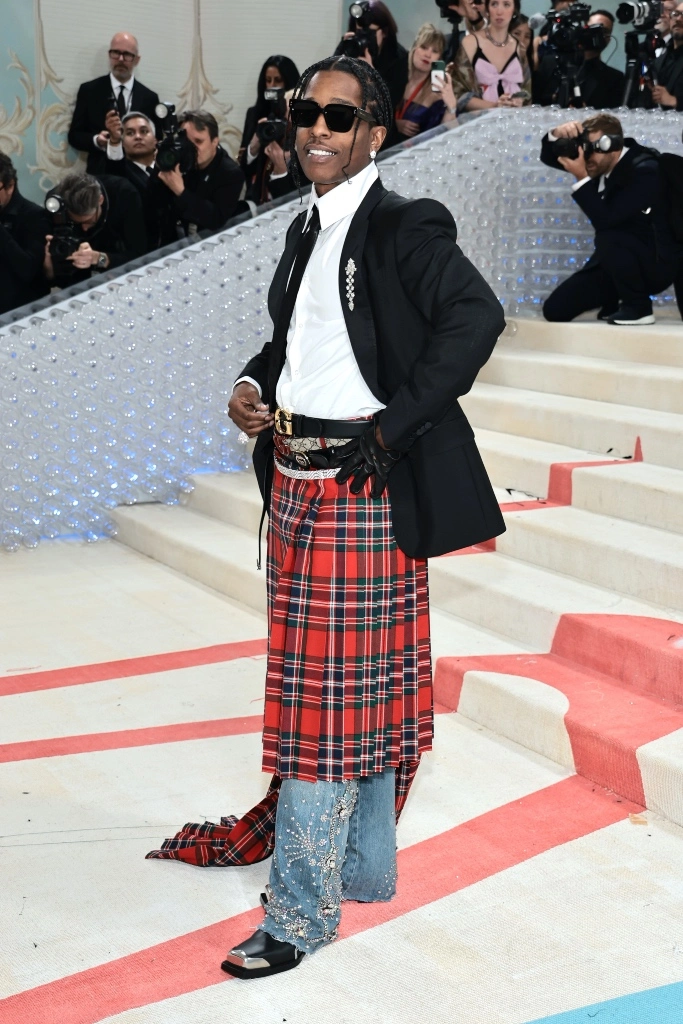
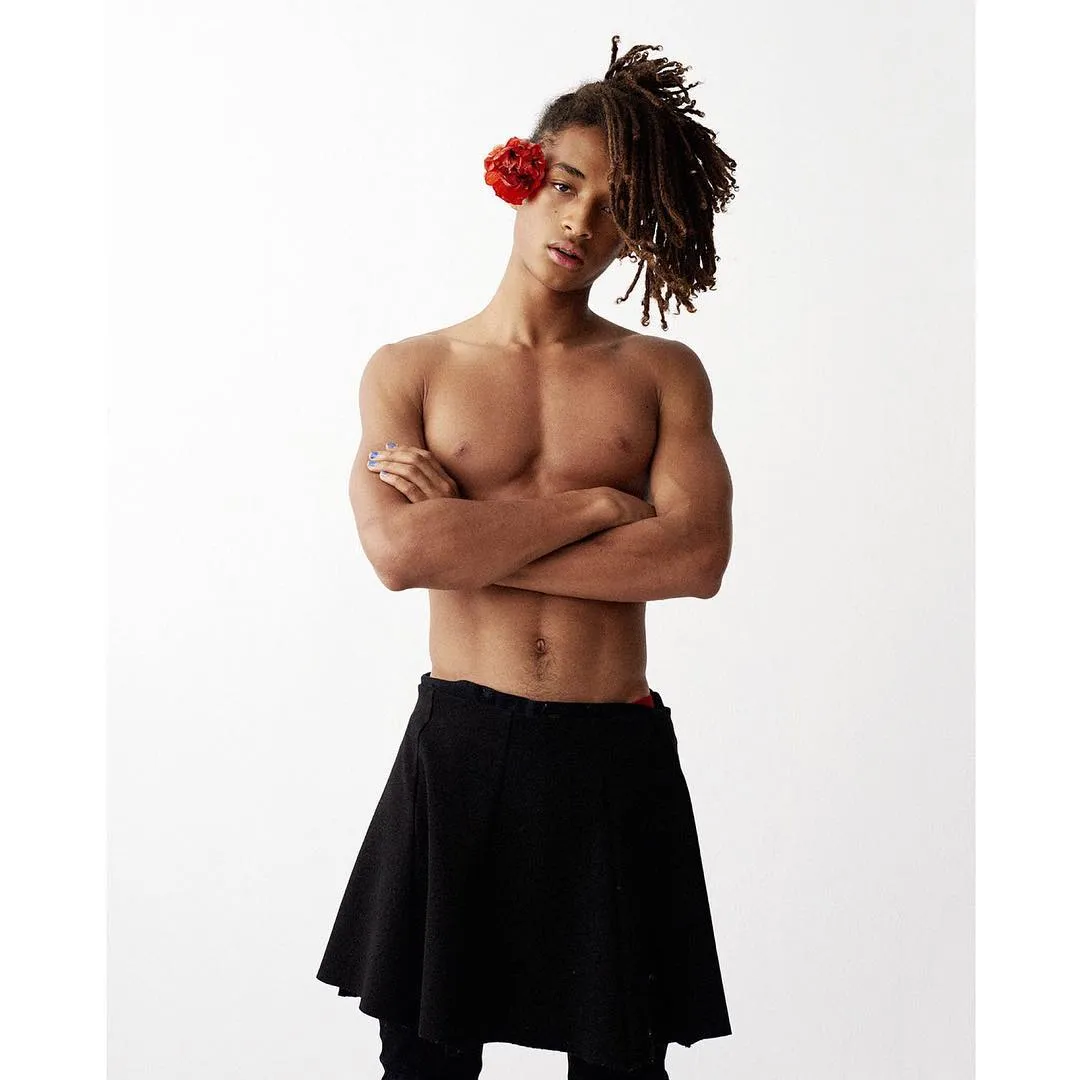
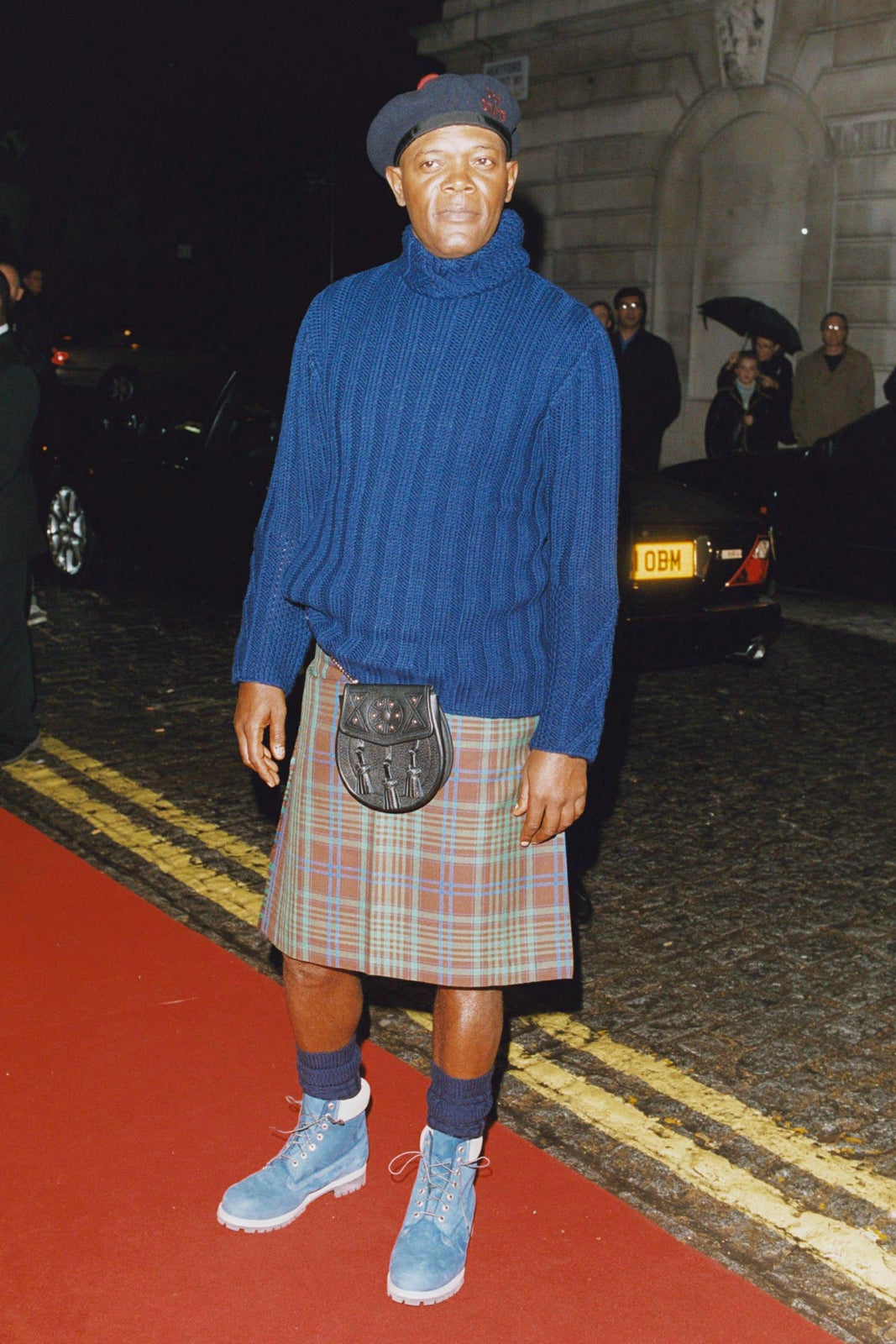
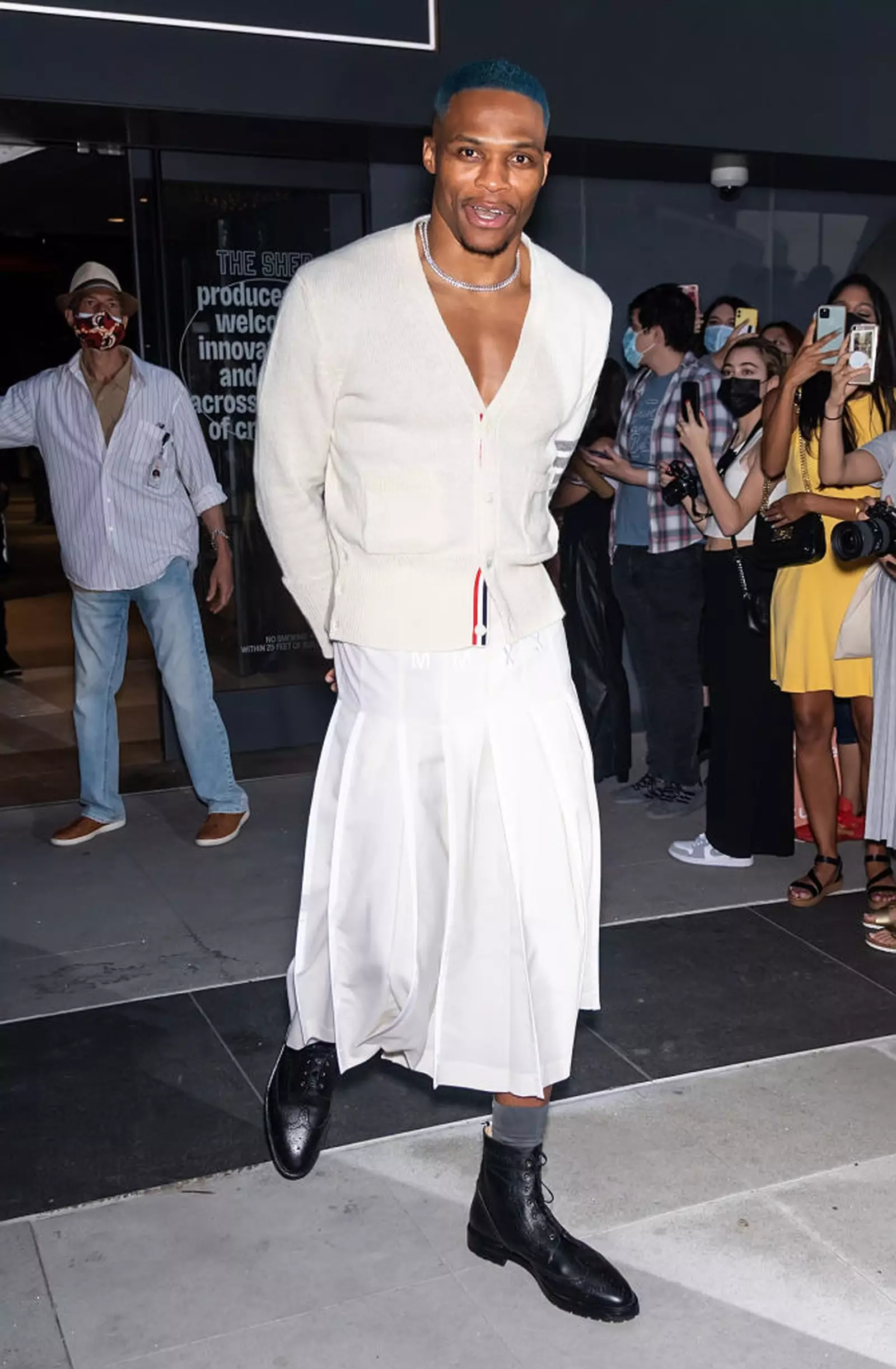
Images courtesy of Internet archives




















































